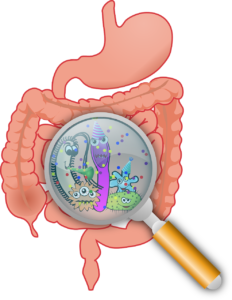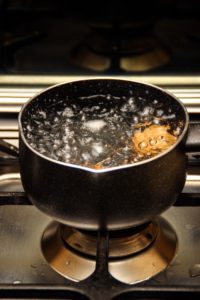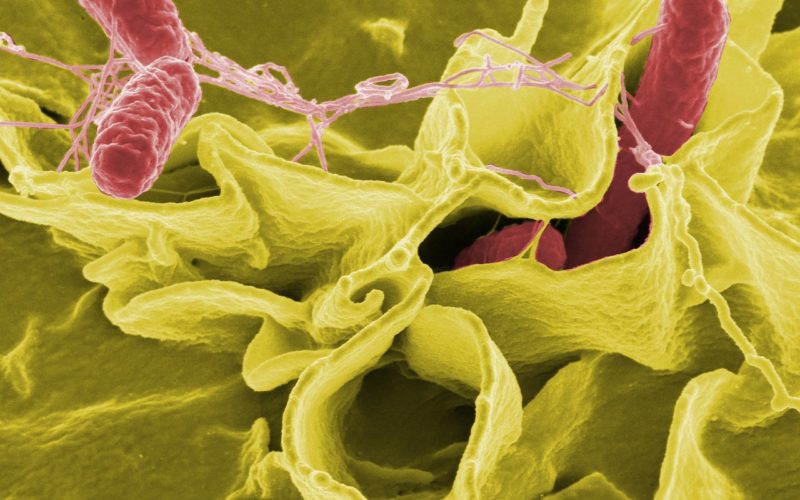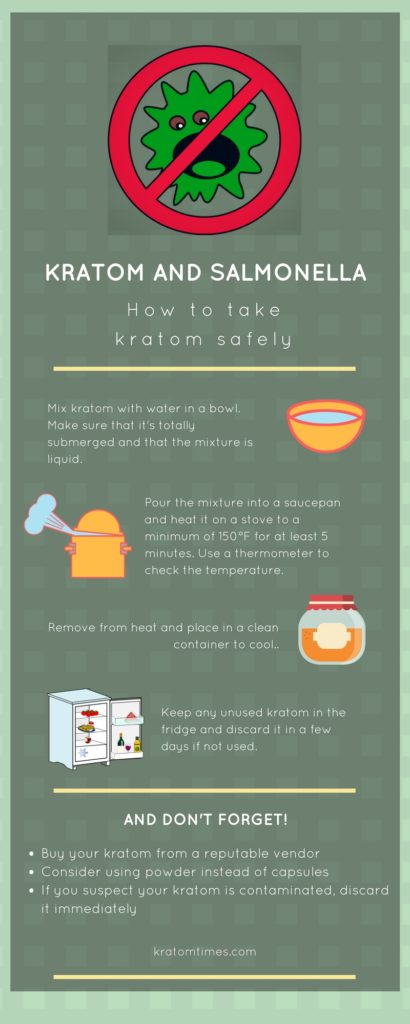Due to the recent news linking kratom to a national salmonella outbreak, many kratom users are worried about getting sick from consuming the plant. Also, many wonder if there is a way to know if the kratom that they’ve bought is contaminated with salmonella. Sadly, the answer is no, unless you send a sample to a laboratory to get it tested, which is both expensive and time-consuming. Nevertheless, there are some measures that you can take to consume kratom (or any other food, for that matter) safely, and most of them are common sense.
Keep reading to learn how salmonella can contaminate kratom and what measures you can take to prevent any infection.
What is Salmonella?
Salmonella is a group of bacteria that live in animal’s intestines. They can shed through animal’s feces. Although salmonella is usually harmless, there are certain types of the bacteria that can affect your health, in fact, they’re the most frequent cause of foodborne illness.
Salmonella can be divided into two types, depending on the illnesses that they cause:
Typhoidal salmonella: This type of salmonella is the most dangerous as these are the strains that can cause typhoid or paratyphoid fever.
Non-typhoidal salmonella: all the other strains. Food poisoning caused by salmonella is commonly known as salmonellosis.
How Can You Get a Salmonella Infection?
 As we previously mentioned, salmonella is one of the most frequent causes of foodborne illness in the United States. In fact, the Centers for Disease Control and Prevention estimate that over 1 million people in the U.S. contract salmonella each year.
As we previously mentioned, salmonella is one of the most frequent causes of foodborne illness in the United States. In fact, the Centers for Disease Control and Prevention estimate that over 1 million people in the U.S. contract salmonella each year.
Usually, salmonella is transmitted by eating foods that are contaminated with the bacteria. Typically, salmonella is present in raw poultry, meat, seafood, eggs, milk and dairy products, although it can also contaminate fruits and vegetables. Also, handling pets – particularly lizards, snakes, turtles and any other reptiles – can spread the bacteria.
How Can You Prevent a Salmonella Infection?
To prevent a salmonella infection, it is crucial that you take certain measures when storing and cooking your food. These measures include:
- Always refrigerate your foods, especially poultry, meat, eggs, seafood and dairy products
- Keep your raw meat, seafood and poultry separated from the other foods not only in the refrigerator but also in your shopping cart.
- Discard broken or dirty eggs.
- Wash your hands thoroughly before preparing any foods and after handling any raw meat or poultry.
- When cooking, wash any tools, utensils, and surfaces after preparing one food item and before going on to the next.
- Don’t place cooked food on a plate or over a surface that previously held raw meat, poultry, eggs or seafood.
- Use different cutting boards to prepare fresh products and raw animal products and always wash them with soapy water after use.
- Cook your foods to a safe temperature: 145°F (63°C) for fish, pork, beef, veal steaks and chops, 160°F (71.5°C) for eggs, casseroles and ground meats and 165°F (74°C) for poultry and to reheat leftovers.
- Wash all fruits and vegetables thoroughly before consumption
- Wash your hands thoroughly after handling any reptiles or animal feces
- Always wash your hands after going to the bathroom
Symptoms of a Salmonella Infection
The symptoms of a salmonella infection are different depending on the type of bacteria that causes it.
Nontyphoidal salmonella has a wide variety of symptoms, although sometimes it’s completely asymptomatic. The symptoms appear between 8 and 72 hours after consuming the contaminated food and can last from 3 to 7 days without treatment. Typical symptoms of salmonellosis include:
 Nausea and vomiting
Nausea and vomiting- Abdominal cramps
- Diarrhea
- Fever and shivers
- Body aches
- Headache
On the other hand, typhoidal salmonella can cause typhoid or paratyphoid fever. It appears after 8-14 days after ingesting the bacteria and can last from 3 to 60 days. In this case, the symptoms are more serious and may include:
- High fever
- Weakness
- Lethargy
- Abdominal pain
- Nosebleeds
- Coughing
- Delirium
Finally, take into consideration that, although salmonellosis is not usually a serious condition and can go with no treatment, it can become problematic in children and adults over 65 years.
How Can Salmonella Contaminate Kratom?
As we previously said, not only raw meats and poultry but also fruits and vegetables can carry salmonella. Obviously, kratom is no exception.
Although salmonella is typically present in animal (and human) feces, kratom can be contaminated with it when it is irrigated with contaminated water. Also when it’s handled or stored in unhygienic conditions. That’s why it’s crucial to always buy your kratom from a reputable source.
Kratom and Salmonella – How to Take Kratom Safely
 So, all things considered, is it possible to prevent a salmonella infection caused by kratom?
So, all things considered, is it possible to prevent a salmonella infection caused by kratom?
Although you won’t be able to know if a particular batch of kratom is salmonella-free unless you test it in a laboratory, there are some measures that you can take to prevent infection. First of all, you’ll need to follow the general measures mentioned above for foods.
But there are also other things that you can do to try to get rid of any traces of salmonella in your kratom. As we have mentioned above, you can kill salmonella by cooking foods to a safe temperature. So, obviously, kratom should be treated the same way.
As per this post on reddit, the best way to get rid of salmonella traces in kratom you can follow these steps:
1 – Mix kratom with water in a bowl. Make sure that is totally submerged and that the mixture is liquid.
2 – Pour the mixture into a saucepan and heat it on a stove to a minimum of 150°F for at least 5 minutes. Use a thermometer to check the temperature.
3 – Remove from heat and place in a clean container to cool.
4 – Keep any unused kratom in the fridge and discard it in a few days if not used.
If you prefer to boil your kratom into a tea, make sure that your kratom is totally submerged under the water. Make sure that it is completely wet. Also, use a thermometer to ensure that your kratom stays at a temperature of a minimum of 160°F (71.5°C) for no less than 15 seconds.
Other Considerations
Finally, there are some considerations that you should take into account when consuming kratom.
First of all, always buy your kratom from a reputable source, and don’t consume any batch from a vendor that has been subjecting of a recall.
Secondly, remember to store your kratom in a sealed container and away from any raw meat, poultry or seafood. Also, consider freezing any bulk kratom. Although freezing foods won’t kill any bacteria, it will prevent any growth.
Also, consider using powder kratom instead of capsules, as you won’t be able to boil these.
And finally, if you suspect that your kratom could carry salmonella, discard it immediately.




